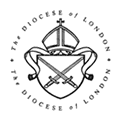Historical sources for a Statement of Significance
Social history
There are many sources which will help you understand the social history of a church and parish. Follow this link for an in-depth guide.
The founding of the church
Nineteenth- and twentieth-century churches in London were founded for a variety of reasons: for example, in many cases medieval mother parishes were divided in response to social changes such as population growth (both in urban areas and the suburbs) or poverty; sometimes they were built to advance the cause of a particular church ‘party’ (perhaps in direct rivalry with another ‘party’ church); or in other cases they were driven by personality or the concerns of landowners and property developers. Church planting (or ‘extension’) was often part of a larger scheme (for example, the Metropolis Church Extension Fund, founded in 1836). Many churches began life as a ‘chapel of ease’ or mission hall in a larger parish.
To find out about the beginnings of ‘your’ church you could consult:
- The Victoria County History for Middlesex (copies are available in reference libraries, or online at www.british-history.ac.uk - from the home page click on ‘London' and then on ‘Victoria County History: Middlesex'). This will often include details of how new parishes emerged in different areas.
- The archives of the Incorporated Church Building Society, which was founded in 1818 to fund the building, enlargement and restoration of churches in England and Wales. Files relating to applications for grants from the ICBS are available at Lambeth Palace Library. These will include application forms and correspondence providing insights into the circumstances under which a church was built or developed, and will also include architectural plans, specifications, artists’ impressions and parochial subscription lists. Digitised architectural plans and drawings relating to individual applications are available online at www.churchplansonline.org. You may also find that there are sources relating to the creation of new parishes at the London Metropolitan Archives.
- The ‘Fulham Papers’ held at Lambeth Palace Library include correspondence sent to the Bishops of London from clergy and leading laity. Here you may find letters relating to circumstances surrounding the establishment of a new church.
Significant personalities
In the history of every church there have been individual people who have had an important influence on its character and activities. Clergy, of course, can exercise a profound or defining influence, and founding incumbents can establish assumptions, patterns of ministry and churchmanship which have a long-term effect. Lay leaders, such as churchwardens, organisers of particular church activities, benefactors and patrons, will also have played an active role.
- For biographical details about clergy see the Crockfords Clerical Directory (now available on online at www.ancestry.co.uk) and the Clergy of the Church of England Database.
- You can find a great deal about clergy and leading laity from their correspondence with the Bishop of London in the Fulham Papers.
- Parish magazines will often provide insights into the influence of leading personalities in the life of the church.
Follow these links to find out more about clergy and laity.
The Church and the community
There are a range of sources available to assist you in understanding the relationship between the church and the local community.
- Important insights into the ways in which the incumbents and churchwardens of a church have perceived their parish can be found in visitation returns, the questionnaires issued every 3-4 years either before or during the visit of the Bishop. You will often read clergy commenting on the condition of their locality and describing the role and activities of the church. You might find that by examining visitation returns over an extended period you will get a sense of the changes in the community over time.
- Parish magazines, which began to grow in popularity from the 1860s, can be an important source of information on the links between church and community.
In order to understand the ways in which the local community has developed over time you could consult:
- The Victoria County History for Middlesex (copies are available in reference libraries, or online at www.british-history.ac.uk - from the home page click on ‘London' and then on ‘Victoria County History: Middlesex').
- Any local histories which have been published. These should be available in your local borough archive, and you can search for titles in the British Library integrated catalogue and the Bibliography of British and Irish History.
- Local newspapers, which may provide you with a good feel for the community and its life. These will be available at your local borough archive and at the British Newspaper Library at Colindale.
- The Charles Booth Survey which in some cases will be an important resource for understanding the social history of London, in particular working-class life, between 1886 and 1903.
Follow this link for more on the church and the community.





